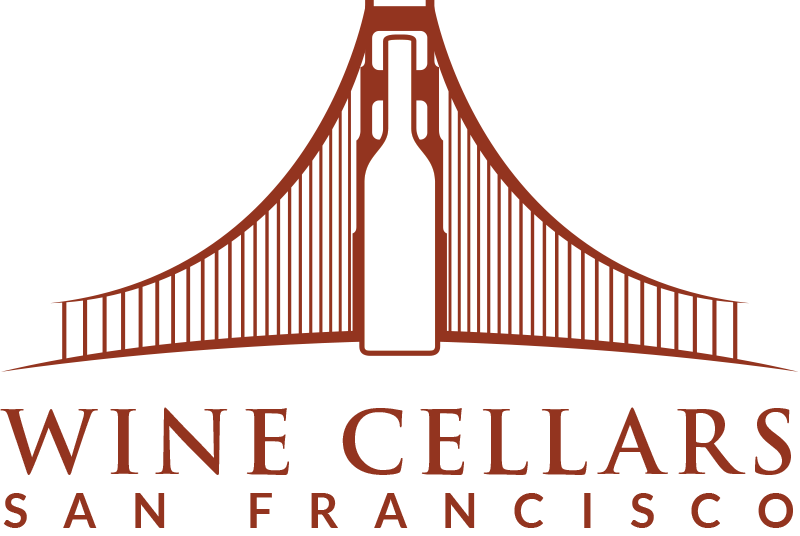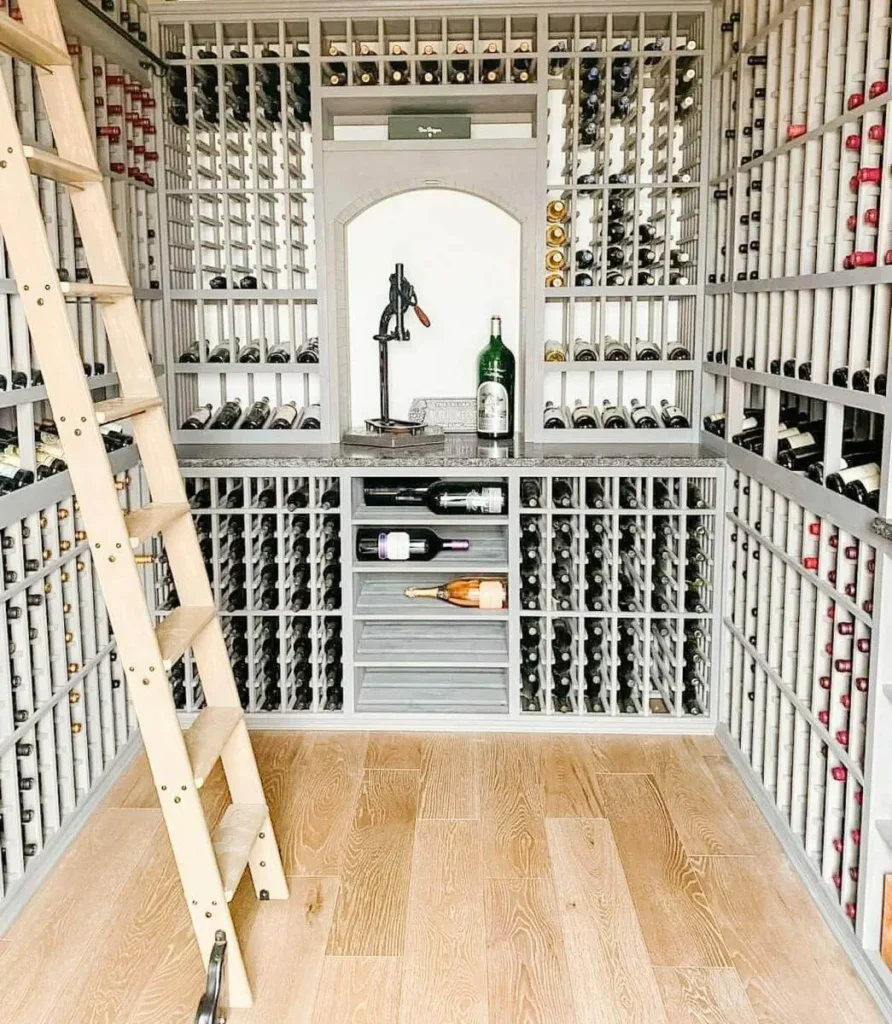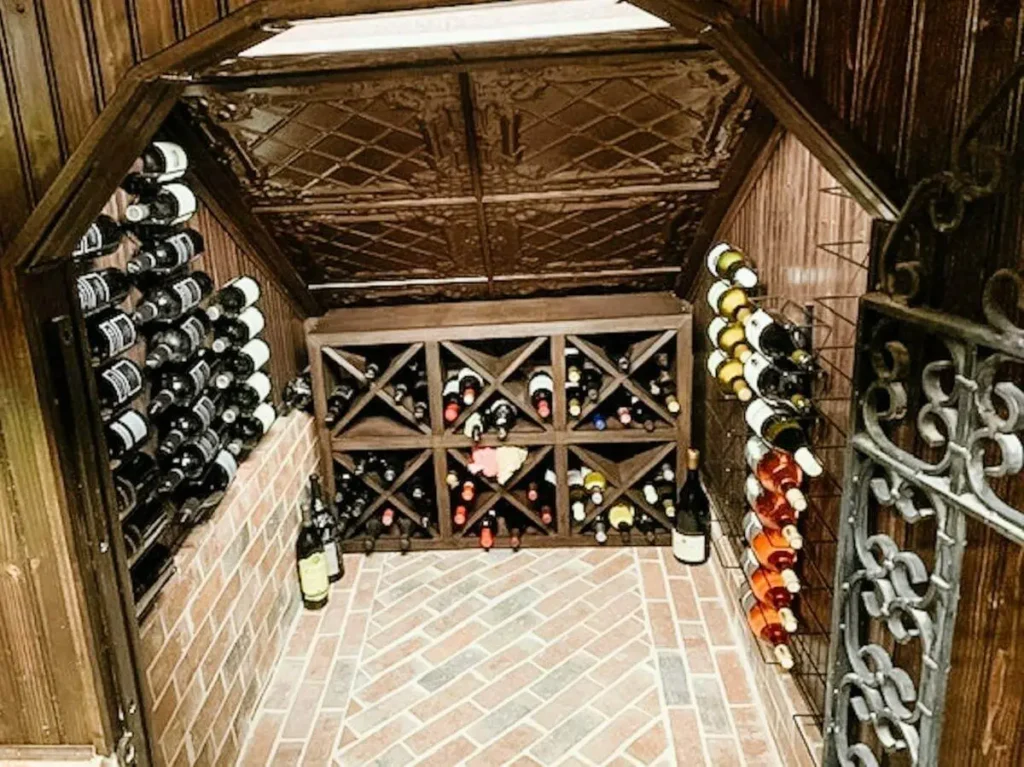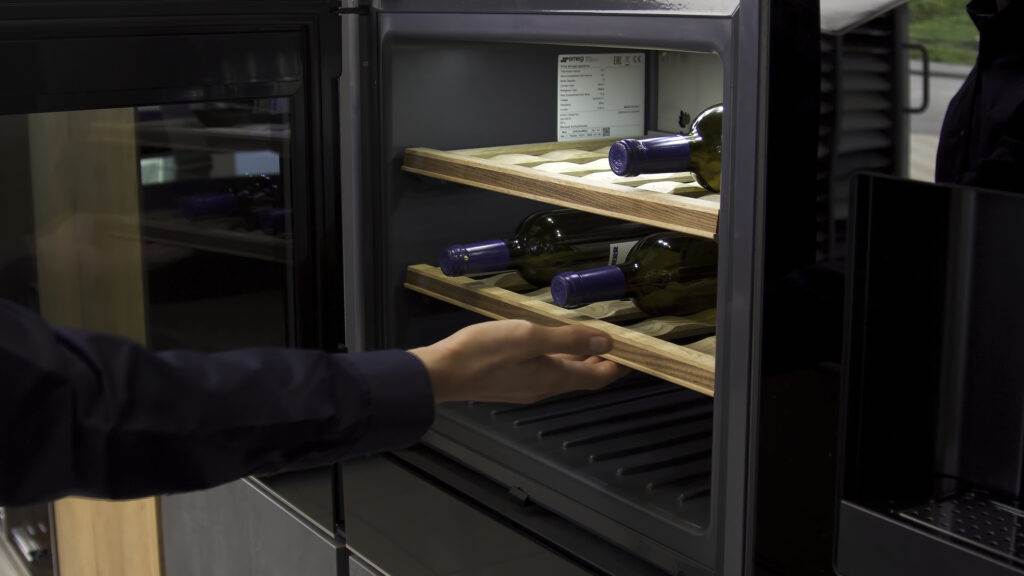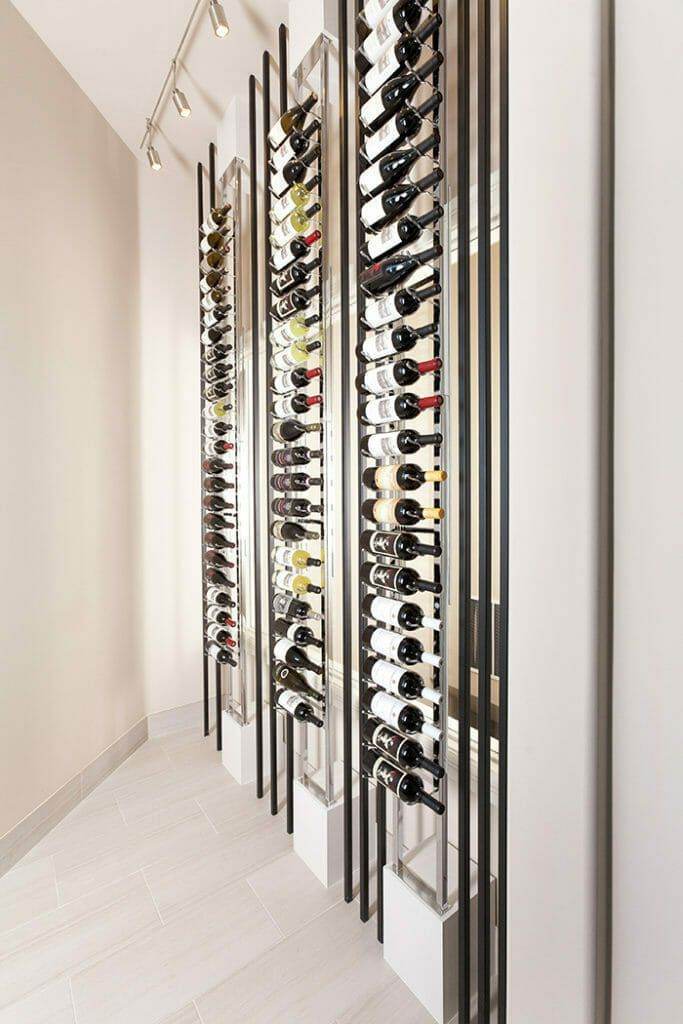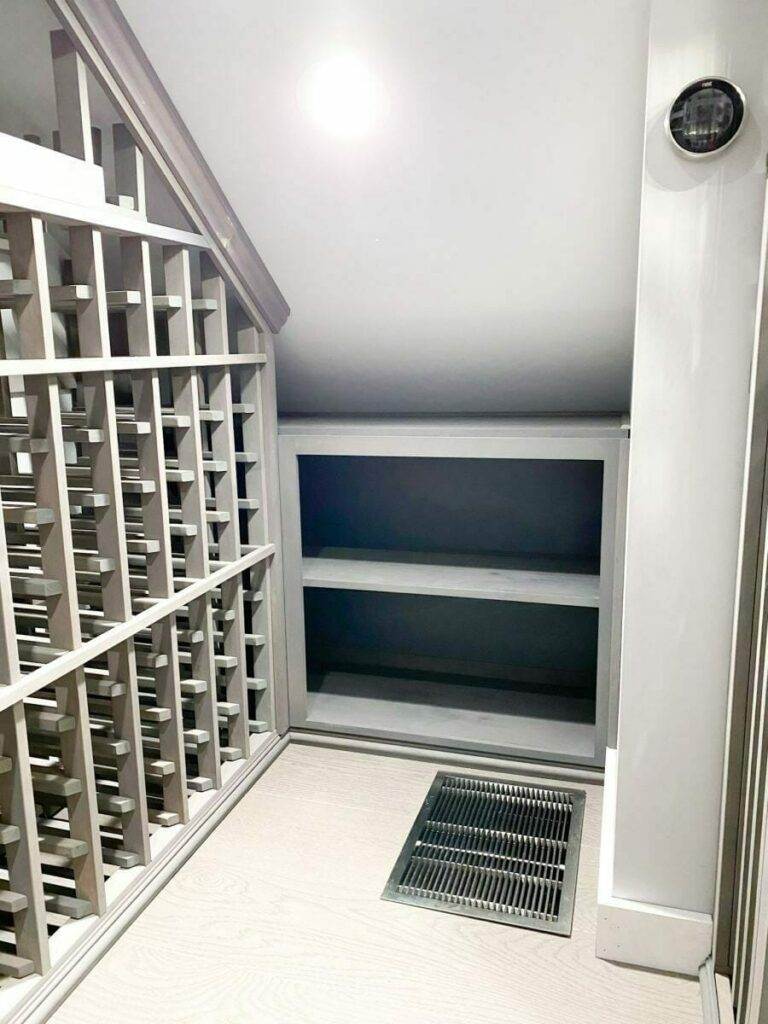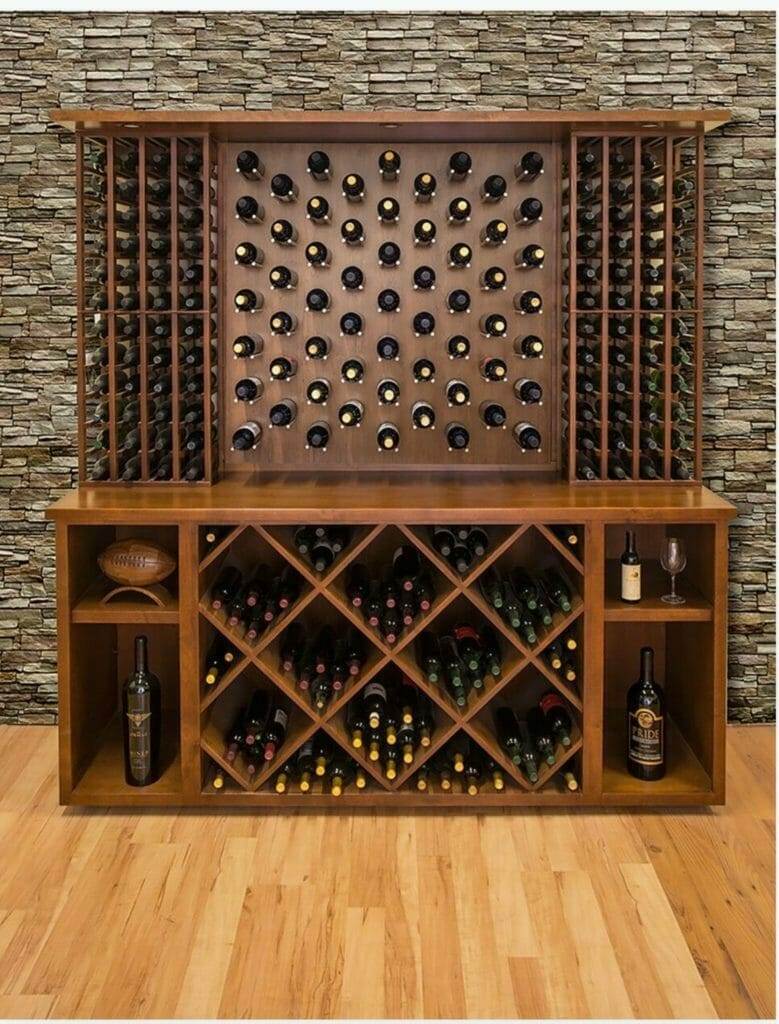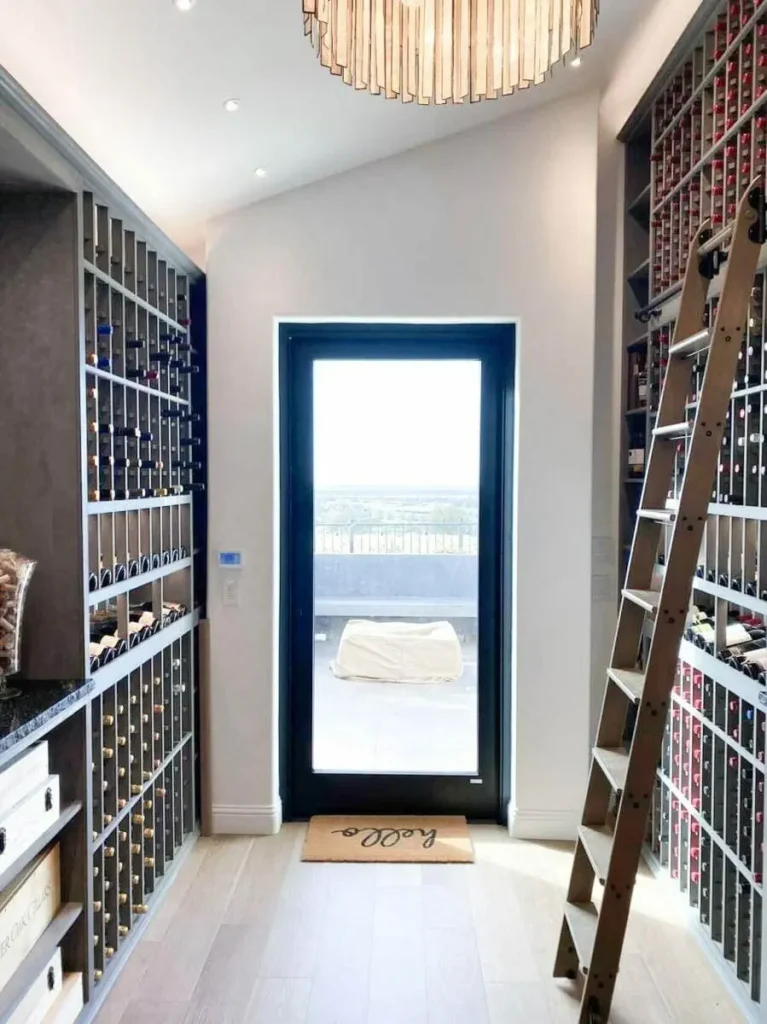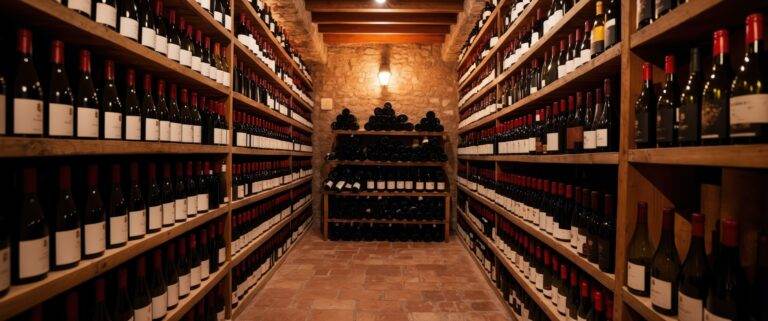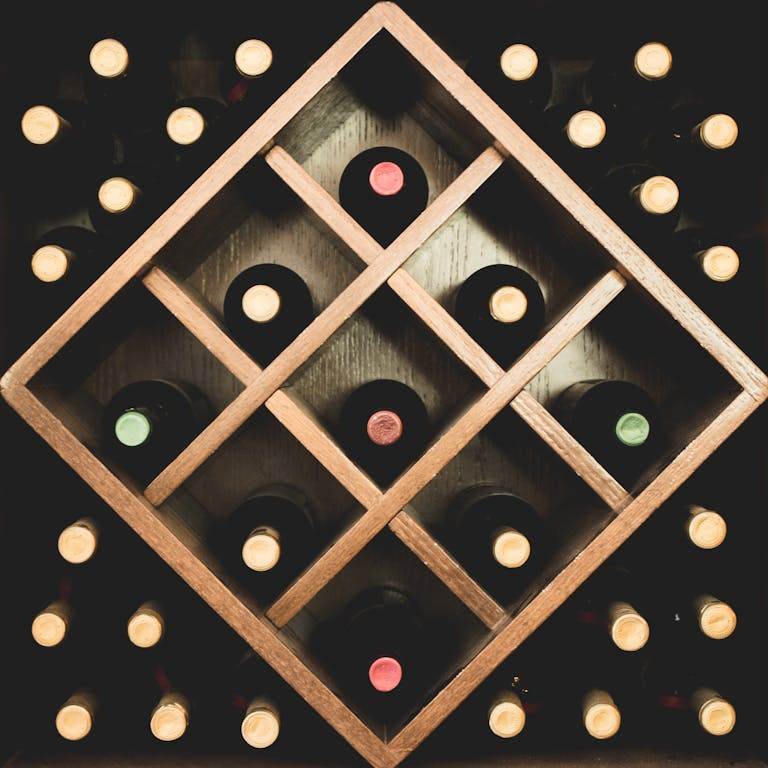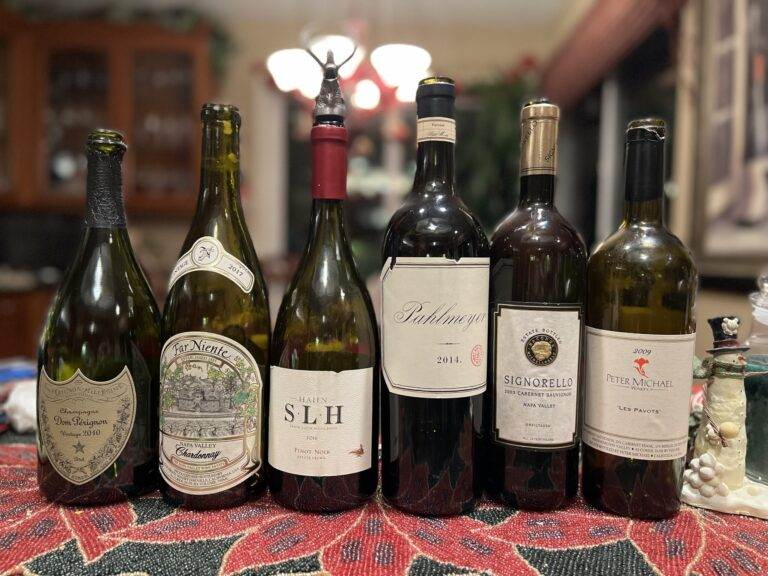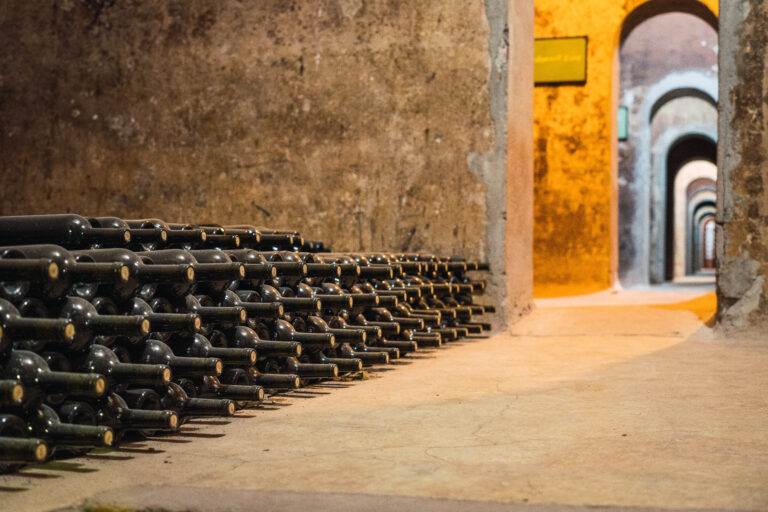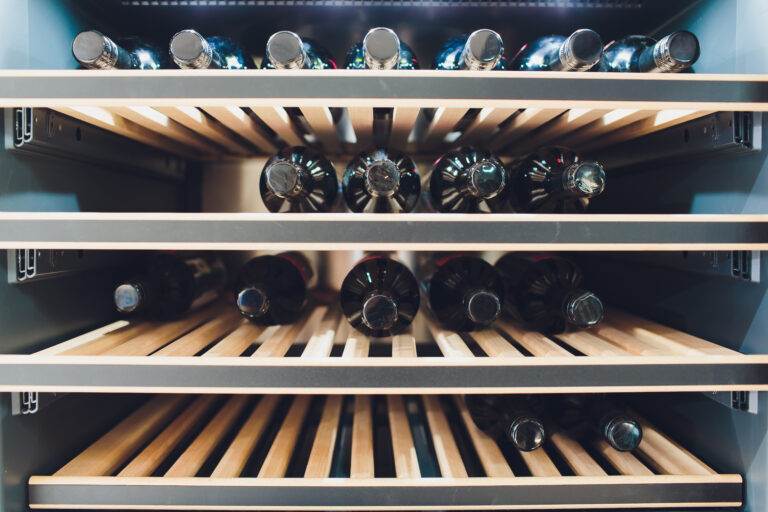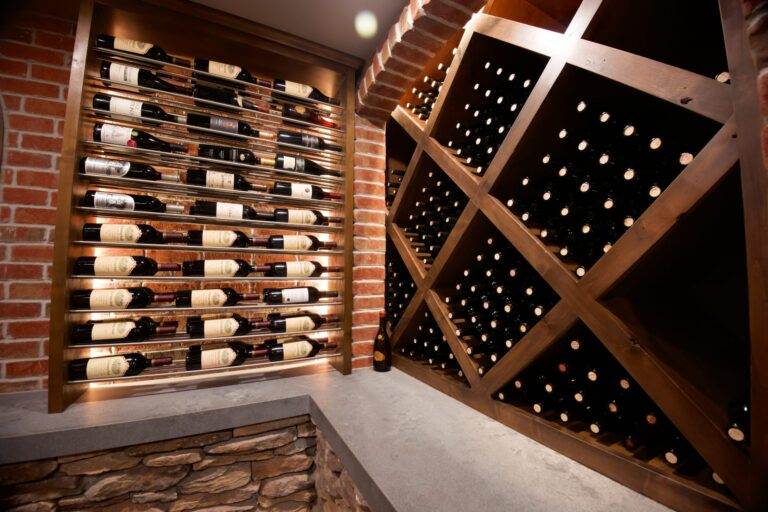Introduction
Importance of Storage
The way we store wine has a profound impact on its preservation and flavor, making storage an essential aspect for both casual drinkers and connoisseurs alike. Proper storage conditions protect wine from temperature fluctuations, humidity, and light exposure, all of which can degrade its quality over time. A dedicated space for wine storage allows individuals to showcase their collection while ensuring that each bottle is maintained at its best. With the right storage setup, enthusiasts can confidently build their libraries, knowing they are accommodating the long-term aging potential of their favorite vintages. Key aspects of storage importance include:
- Temperature Control: Ideal storage temperatures range from 45°F to 65°F.
- Security: A designated area minimizes the risk of accidental damage.
- Convenient Access: Organized storage makes it easier to find and enjoy a bottle.
Benefits of Wine Cellars
Investing in a wine cellar offers numerous benefits beyond mere storage. A well-designed wine cellar creates an opportunity for relaxation, socialization, and enjoyment of fine wines. Not only does it enhance the functionality of your space, but it also adds to the aesthetic appeal of your home. The advantages of having a wine cellar include:
- Optimal Conditions: Maintains consistent temperatures and humidity levels.
- Enhanced Flavor: Properly stored wines develop their full-bodied characteristics and complex flavors.
- Increased Value: A well-stocked wine cellar can raise property value and attract potential buyers who appreciate an investment in quality wines.
In summary, the importance of proper storage and the distinct benefits of wine cellars underscore the value they provide to wine lovers. Creating a dedicated wine storage solution is a worthy endeavor that pays dividends in both quality and enjoyment of wine.
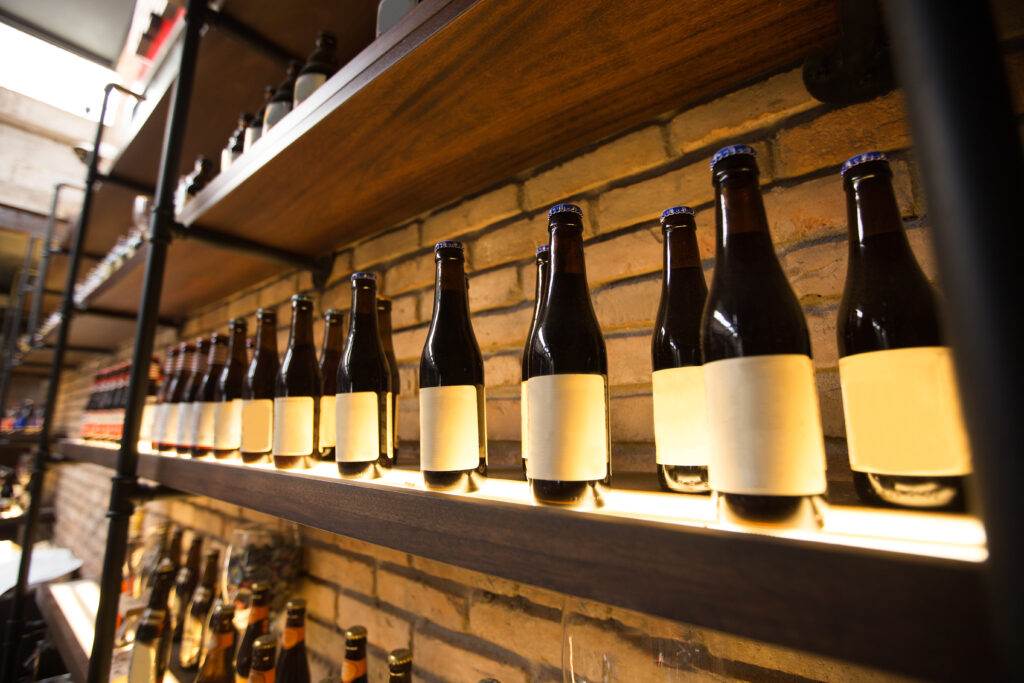
Assessing Your Space
Utilizing Understairs Areas
When considering wine storage, the first step is assessing available space in your home. An often-overlooked area is the space beneath the stairs, which can serve as a unique and functional wine storage solution. This underutilized nook offers a discreet yet visible way to display your collection without taking up precious square footage elsewhere. Transforming under-stair areas into a wine cellar can be both creative and efficient. Here are some key considerations:
- Custom Shelving: Installing tailored shelves allows for optimal organization and maximizes the use of vertical space.
- Climate Control: Ensure proper insulation and temperature regulation to protect your collection from fluctuating conditions.
- Aesthetic Components: Decorative doors or glass enclosures can enhance the appearance while providing easy access.
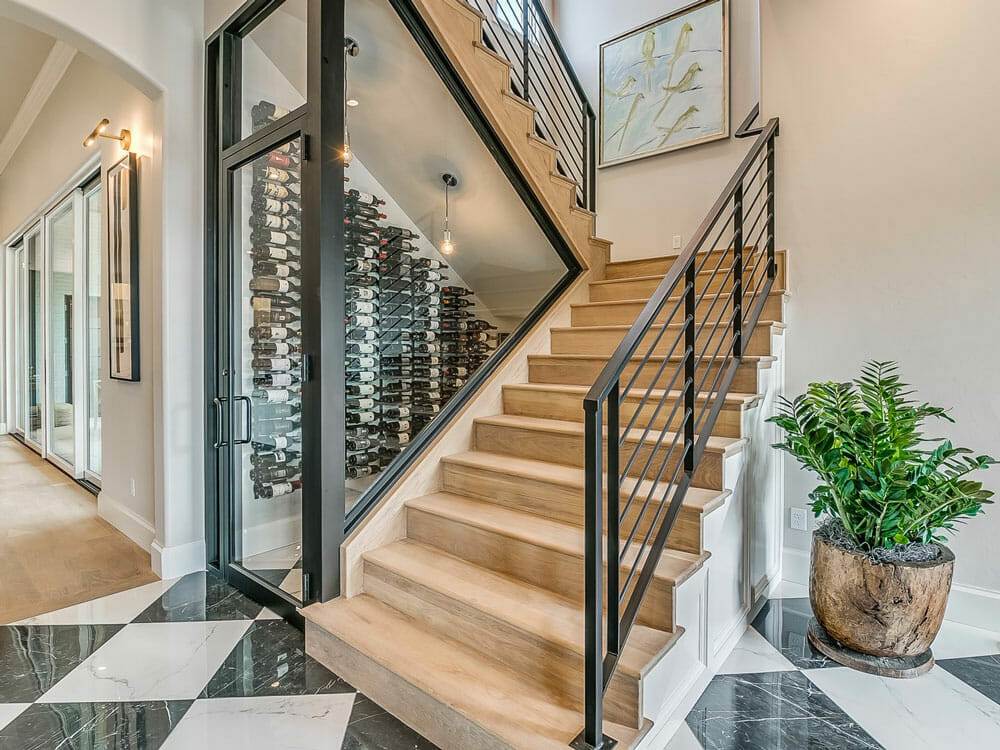
Vertical Storage Solutions
Vertical storage solutions are another great way to maximize space, especially in smaller homes. By taking advantage of height, enthusiasts can showcase their collections without the need for extensive floor space.
Consider implementing these vertical storage options:
- Wall-Mounted Racks: Mounted racks or cubbies provide a stylish way to display bottles while keeping them organized.
- Tall Wine Towers: Investing in tall wine towers enables more bottles to be stored in a compact footprint.
- Stackable Bins: These versatile bins save space while allowing easy access to favored wines.
By creatively utilizing under-stair areas and vertical storage solutions, wine lovers can enhance their ability to store and display their collections in a functional and aesthetic manner. Assessing your space allows for innovative ideas that ensure both practicality and design are considered in creating the perfect wine storage environment.

Choosing the Right Materials
Wood vs. Metal Racks
Once you’ve assessed your available space for wine storage, the next step is to choose the right materials for your racks. Two popular options are wood and metal, each offering its unique benefits and aesthetics.
Wood Racks: Wood is a timeless material that adds warmth and elegance to your wine storage. It’s particularly favored for its ability to absorb vibrations, which can negatively impact wine quality.
Aesthetic Appeal
Wood offers a classic look, blending seamlessly with various interior designs.
Customization
Wooden racks can be easily tailored to fit any space.
Natural Insulator
Wood helps maintain stable temperatures.
Metal Racks: Metal, on the other hand, is often viewed as a modern alternative. It is sturdy and can hold large collections effectively.
Durability
Metal racks can withstand lots of weight and are less susceptible to wear and tear.
Sleek Design
The minimalist appearance of metal can enhance contemporary décor.
Easy Maintenance
Metal surfaces are simple to clean, making upkeep a breeze.
Ultimately, the decision between wood and metal depends on your style, budget, and how you plan to use your wine storage.
Importance of Insulation
In addition to selecting materials for your racks, insulation plays a crucial role in maintaining the ideal conditions for wine storage. Proper insulation protects your collection from temperature fluctuations and external elements, ensuring that your wines age gracefully. Key factors to consider include:
Thermal Barriers
Insulated walls and doors help maintain consistent temperatures.
Humidity Control
Insulation can prevent moisture buildup, essential for avoiding cork deterioration.
Energy Efficiency
Well-insulated wine cellars require less energy to maintain temperature, saving on utility bills.
Investing time and resources into selecting the right materials and ensuring adequate insulation will create an ideal environment for your wine collection. This attention to detail guarantees that your wines will not only be stored beautifully but will also preserve their quality over time.
Lighting and Temperature Control
LED Lighting Options
With the racks set in place and the materials chosen, next up is focusing on lighting and temperature control, two crucial elements for ensuring the longevity and quality of your wine collection. When it comes to lighting, LED options stand out as the best choice for wine storage environments.
Why Choose LED Lighting?:
LEDs are energy-efficient and generate less heat compared to traditional light bulbs, making them ideal for wine cellars where temperature stability is key.
- Heat Management: Lower heat emission helps maintain cooler temperatures, essential for preserving wine quality.
- Color Variety: LEDs come in various colors and brightness levels, allowing for customizable lighting effects that enhance the aesthetic of your cellar.
- Longevity: With a longer lifespan, LEDs reduce the hassle of frequent replacements.
Incorporating LED lighting not only highlights your collection beautifully but also serves a functional purpose in maintaining optimal storage conditions.
Maintaining Ideal Wine Conditions
Maintaining the ideal conditions for your wine does not stop at lighting; it extends to controlling temperature and humidity levels. Ideally, wine should be stored in a climate-controlled environment with specific conditions to allow for proper aging. Key factors to ensure favorable wine storage conditions include:
- Temperature: Aim for temperatures between 45°F to 65°F, with most enthusiasts opting for a stable 55°F.
- Humidity: Maintaining humidity levels between 50% and 70% is critical to prevent corks from drying out or mold growth.
- Avoiding Fluctuations: Sudden changes in temperature or humidity can lead to spoilage, so installing a reliable thermostat and hygrometer is advisable.
By combining effective LED lighting with the right environmental controls, you can create a wine storage oasis where your bottles will thrive. This thoughtful balance ensures your collection not only looks great but also remains in peak condition for years to come.
Organization and Accessibility
Labeling and Inventory Systems
Now that the lighting and temperature elements are in place, the next crucial aspect is organization and accessibility. A well-organized wine storage system not only maximizes efficiency but also enhances the enjoyment of your collection. Implementing a robust labeling and inventory system is fundamental in achieving this.
Labeling: Clear labeling helps you quickly identify your wines without having to search through each bottle.
Here are a few tips:
- Label Maker: Invest in a label maker for professional-looking tags that include the wine’s name, varietal, vintage, and tasting notes.
- Color Coding: Use color-coded labels to categorize wines by type, region, or occasion for easier browsing.
- Positioning: Place labels on the neck of the bottle or on the shelf, ensuring they are visible at a glance.
Inventory System: Combine labeling with a digital inventory tracking system to maintain a comprehensive record of your collection.
Features can include:
- Database: Create a simple spreadsheet or use specialized wine tracking apps.
- Quantity Tracking: Record the number of each bottle and its location in your cellar.
- Historical Notes: Include tasting notes and past experiences with the wine for future reference.
Pull-Out Shelves and Racks
To further enhance accessibility, consider incorporating pull-out shelves and racks in your wine storage setup. These features can transform your wine cellar into a user-friendly space.
- Easy Access: Pull-out shelves allow you to retrieve bottles easily without needing to climb or bend, reducing the risk of accidental damage.
- Maximized Space: These shelves can make the most of deep cabinets and tight spaces, ensuring you leverage every inch of available area.
- Adjustability: Many pull-out racks are adjustable, allowing you to customize storage heights for varying bottle sizes.
Incorporating efficient labeling, inventory systems, and pull-out storage solutions allows for not just organized wine cellars, but also an enjoyable experience when selecting a bottle. This careful attention to accessibility means you can focus on the enjoyment of your wine, rather than the hassle of finding it.
Design and Aesthetics
Creative Wall Displays
As you finalize the organizational aspects, it’s time to focus on the design and aesthetics of your wine storage area. Thoughtful design can not only enhance the functionality of the space but also elevate its visual appeal. Creative wall displays can serve as stunning focal points in your cellar or dining room.
Ways to Create Stunning Displays:
- Wine Racks: Opt for artistic wall-mounted wine racks that showcase your bottles like artwork. They can be made of wood, metal, or even acrylic, providing a modern touch.
- Floating Shelves: Install floating shelves to create an elegant retail-style display, interspersing wine bottles with decorative elements like glassware or wine-related art.
- Shadow Boxes: Consider using shadow boxes to display rare finds or limited editions, making them easily accessible while highlighting their uniqueness.
These displays not only serve a functional purpose but also turn your wine storage into a conversation starter, showcasing your personality and preferences.
Incorporating Tasting Areas
Equally important in the design process is the incorporation of tasting areas. A dedicated tasting space allows you to enjoy your collection with friends and family, elevating both the experience and the space.
Key Aspects to Consider:
- Table and Seating: Include a small table with comfortable seating to create an inviting atmosphere.
- Glassware Storage: Ensure easy access to glassware by incorporating racks or cabinets for storage; this makes transitioning from bottle selection to tasting seamless.
- Mood Lighting: Employ soft, warm lighting to create a cozy ambiance during tastings. Dimmer switches or adjustable fixtures can help set the right mood.
By integrating creative wall displays and inviting tasting areas, you can transform your wine cellar into a space that reflects your style and enhances your wine experience. This thoughtful approach to design allows you to savor your collection while enjoying the company of fellow enthusiasts.
Maximizing Storage Efficiency
Compact Wine Coolers
As you strive to create an optimal wine storage environment, maximizing storage efficiency plays a pivotal role. One of the most effective ways to achieve this is by incorporating compact wine coolers into your setup. Compact wine coolers offer a range of benefits that can significantly enhance your wine storage strategy.
Benefits of Compact Wine Coolers:
- Space-Saving Design: Ideal for those with limited space, these coolers can fit seamlessly into various locations, such as under counters, in small closets, or even on countertops.
- Temperature Control: Most compact wine coolers are equipped with advanced temperature controls, allowing you to store reds and whites precisely at their ideal temperatures.
- Versatile Capacity: Many models come with adjustable shelves that can accommodate both standard wine bottles and larger formats, making them a versatile choice for collectors.
By integrating compact wine coolers into your wine storage plan, you can keep your collection safe while making the most of your available space.
Customizing Storage Solutions
Alongside compact wine coolers, customizing your storage solutions can significantly improve efficiency. Tailoring your storage to meet your specific needs not only maximizes space but also enhances accessibility.
Customization Tips:
- Modular Racking Systems: Opt for modular racks that allow you to mix and match different layouts based on your collection size and shape. This adaptability lets you revise your setup as your collection grows.
- Integrated Features: Consider built-in racks or shelves that combine with existing furniture, such as kitchen island bases or dining room cabinets. This strategy utilizes every area effectively while maintaining aesthetic continuity.
- Personalized Finishes: Select finishes that reflect your personal style—whether it be rustic wood, sleek metal, or contemporary glass—creating a cohesive and inviting wine storage area.
By implementing compact wine coolers and customizing your storage solutions, you can dramatically improve the efficiency of your wine cellar, ensuring that it meets your needs both now and in the future. This level of organization enhances your wine experience, making it not just functional but also a showcase of your passion for wine.
